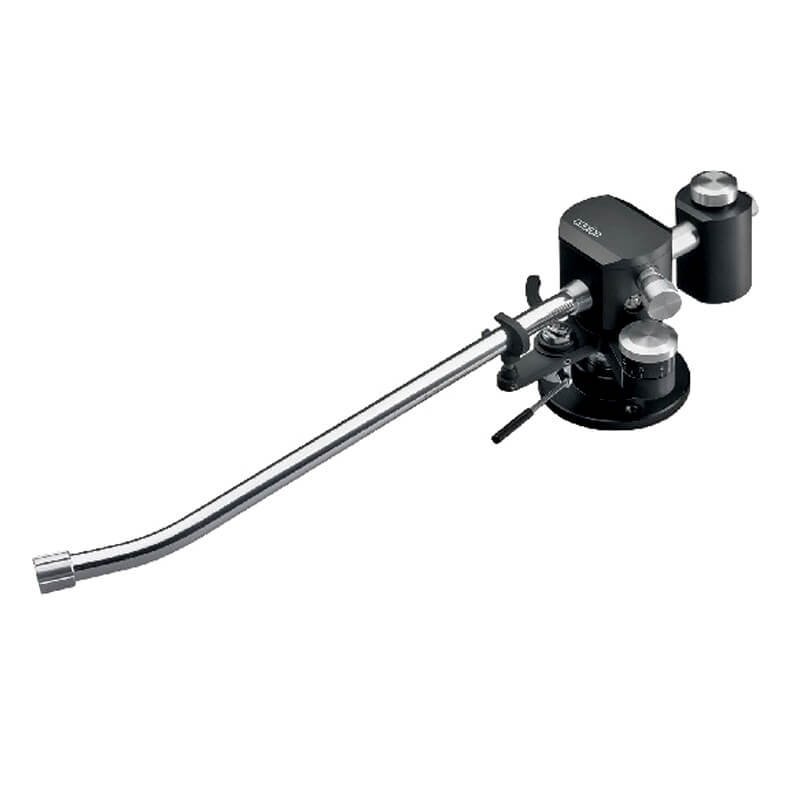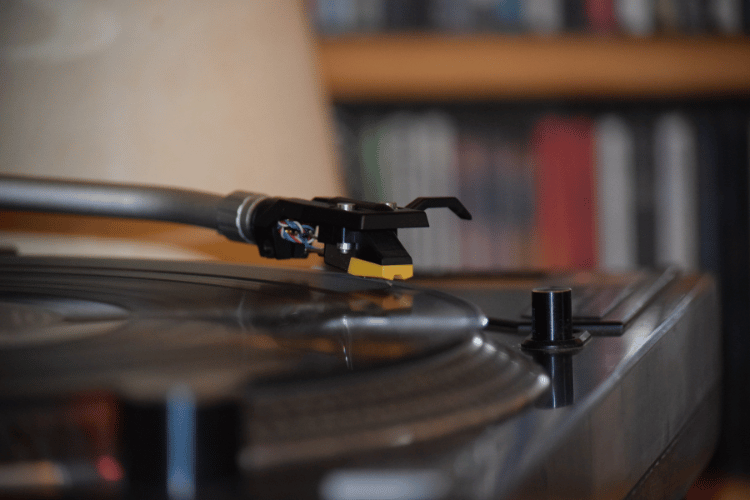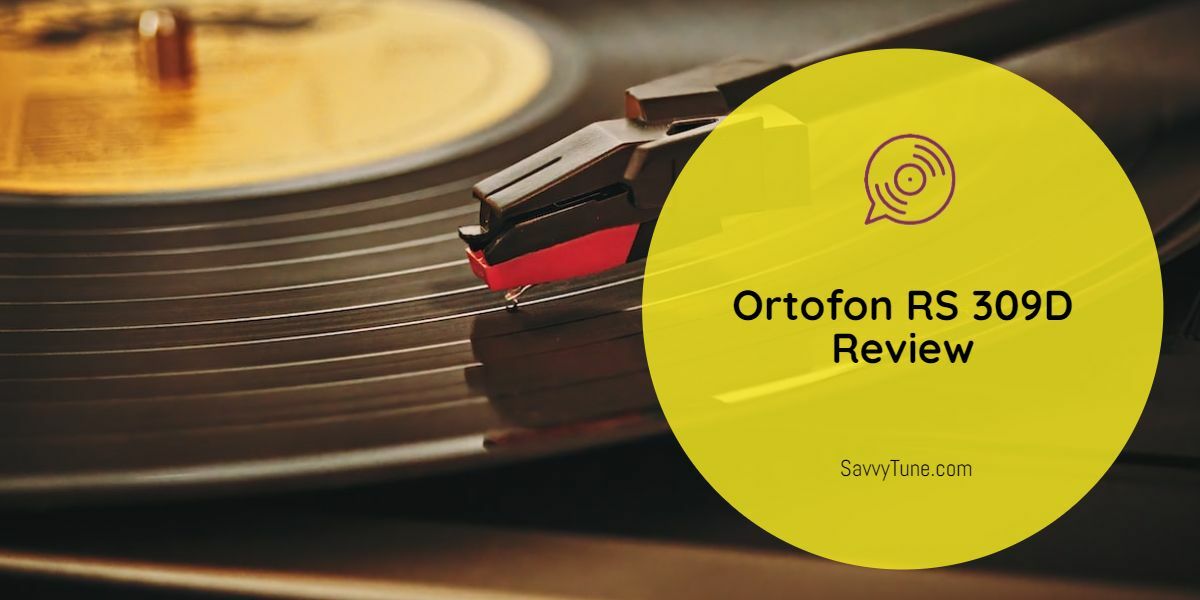Several components contribute to a good listening experience. I think one of the major elements of a quality sound is a high-end tonearm, like the Ortofon RS 309D.
Whether you’re planning to upgrade your current tonearm or just want to fulfill your curiosity, you’ve come to the right place.
In this article, I’ll discuss everything you need to know about Ortofon RS 309D, including its pros and cons. Let’s dive into this Ortofon RS 309D Review.
What Is Ortofon RS 309D?

The Ortofon RS 309D is an adjustable 12-inch tonearm that takes musical experience to a higher level by offering an adjustable vertical tracking force. It also provides a dynamic balance system, which increases its stability while playing records.
The RS 309D’s arm is longer than the average nine inches. As a result, it can reduce tracking errors and promise cleaner and smoother sound quality. On top of that, you can use the tonearm for a wide variety of cartridges in the market.
However, the tonearm won’t fit the standard Baerwald alignment because RS 309D has a Japanese geometry.
Regardless, Ortofon’s 12-inch tonearm is a great choice.
What Are the Key Features of Ortoson RS 309D?
The Ortofon RS 309D is equipped with these key features:
1. No-Skate Feature
The Ortofon’s RS 309D’s anti-skating feature can improve the sound quality of your records by preventing the tonearm from skating over the record’s surface. It can also balance the tracking force, and reduce damage and distortion on your records.
2. Configurable Vertical Tracking Force
In addition to the anti-skating feature, the Ortofon RS 309D also has a configurable vertical tracking force. The weight pushing down on your stylus and record can affect the amount of record wear on the tip of the stylus. Plus, it also affects the sound quality.
However, the tracking force depends on the type of cartridge you’re using.
Luckily, with Ortofon’s configurable tracking force, you can easily adjust the weight recommended for your cartridge.
3. Short Wire Spring Design
The Ortofon RS 309D offers a short wire spring design. One end of the spring is fastened to the top of the arm base, directly above the axis of the pivot housing or assembly. This way, the spring pulls in a line parallel to the arm tube.

As a result, it eliminates unwanted vibrations in the tonearm.
4. Adjustable Tonearm Height
The Ortofon RS 309D features an adjustable tonearm height. This means that you can easily adjust the Vertical Tracking Angle or VTA.
Readers also check: our full Ortofon SH-4 review
The VTA of the tonearm on your record player is a critical adjustment for good sound quality. In fact, it can imitate a sound similar to a live performance.
5. Detachable Cable and Headshell with Standard SME Type Connection
Ortofon’s J-shaped arm has a detachable cable, which makes it possible to connect individual phono cables. Other than that, its detachable headshell has a standard SME connection to the arm.
This way, you can attach and detach the headshell. Moreover, you can easily achieve the right alignment between it and the cartridge.
What Are the Pros and Cons of Ortofon RS 309D?
Here are the pros and cons of Ortofon RS 309D:
Pros
- Minimize Uneven Stylus Wear
- Prevent Damage to the Records
- Minimize Distortion During Playback
- Eliminates Unwanted Vibration in the Tonearm
- Sound Transparency
Cons
- RS 309D Doesn’t Fit Standard Baerwald Alignment
Pros
1. Minimize Uneven Stylus Wear
The Ortofon RS 309D allows your stylus to rest perfectly in the record groove and ensures that you have the right channel balance between your right and left channels. As a result, it can minimize stylus wear because it’s not pushing to one side of the groove.
2. Prevent Damage to the Records
The tonearm offers a configurable tracking force. By adjusting the tonearm to an ideal weight, you can prevent the cartridge from sitting too lightly or too heavily on the record grooves.
As a result, the cartridge can track the record properly rather than scratching the record and causing serious damage.
3. Minimize Distortion During Playback
The tonearm can provide dynamic sound because it prevents unwanted vibrations and skating. This way, the stylus doesn’t skip or jump while playing the record.
Moreover, it allows users to adjust the ideal tracking weight so the stylus isn’t pushing heavily on the record.
This reduces distortion and prevents overpowering the bass.
4. Eliminates Unwanted Vibration in the Tonearm
The new spring design of Ortofon RS 390D ensures that the pull of the spring remains steady and vertical. Consequently, it eliminates potential vibration in the tonearm.
5. Sound Transparency
Ortofon RS 390D lets you listen to your records with high-end quality. This transparent sound can make you feel as if you’re hearing the live performance of your favorite band.
Related: Sumiko Blue Point 2 vs. Ortofon 2M Bronze
In fact, the more transparent the record sounds, the closer it sounds to live music.
Cons
1. RS 309D Doesn’t Fit Standard Baerwald Alignment
Unfortunately, the Ortofon RS 309D has a Japanese geometry. This means that it isn’t fit for Baerwald alignment.
Ortofon designed RS 309D with null points at 59.9mm and 115.3mm from the center of the platter. On the other hand, the Baerwald alignment has null points at 66mm and 120.9mm.
The Verdict
Generally, the Ortofon RS 309D offers a transparent sound for a high-end musical experience.
Its anti-skating feature and configurable vertical tracking force ensure that you’ll hear less distortion during playback and keep the record from damage.
Other features, such as the spring short wire spring design and adjustable tonearm height promise a good sound quality because they can prevent unwanted vibration to the tonearm.
On top of that, the tonearm has a detachable headshell, so you can use a wide array of cartridges.
However, keep in mind that the RS 309D isn’t compatible with the Baerwald alignment.

